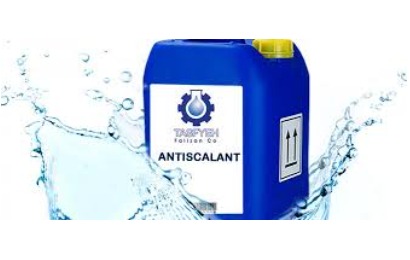Antiscalants types and their mechanisms of action
Antiscalants are chemicals used in various industrial processes, particularly in water treatment, to prevent the formation and deposition of scale on equipment surfaces. Scale is formed when dissolved minerals, such as calcium, magnesium, and silica, precipitate out of solution and adhere to surfaces like pipes, heat exchangers, and boilers. Antiscalants work by interfering with the crystallization process of these minerals.
There are several types of antiscalants, and they typically employ one or more mechanisms of action to prevent scale formation. Here are some common types and their mechanisms of action:
1.Threshold Inhibitors:
Mechanism of Action: These antiscalants contain compounds that can ind to the scaling ions, such as calcium and magnesium, in the water and form complexes. These complexes have a higher solubility than the individual ions, preventing them from forming solid deposits. Threshold inhibitors effectively increase the saturation point of the water, allowing higher concentrations of scaling ions to remain in solution without scaling.
2. Crystal Modification Agents:
Mechanism of Action: Crystal modification agents interfere with the crystal growth of scaling minerals. They can alter the crystal structure, making it more difficult for the crystals to adhere to surfaces. As a result, the scale formed is softer and less likely to stick to equipment.
3. Dispersants:
Mechanism of Action: Dispersants work by preventing the agglomeration of small-scale particles into larger, more problematic deposits. They inhibit the particles from coming together, keeping them in suspension, and making it easier for them to be carried away by the flow of water.
4. Sequestrants:
Mechanism of Action: Sequestrants are chelating agents that bind to scaling ions and form stable complexes. These complexes are less likely to precipitate out of solution, thus preventing scale formation. Common sequestrants include polyphosphates and certain organic acids.
5. pH Adjustment:
Mechanism of Action: In some cases, controlling the pH of the water can be an effective way to prevent scale formation. Adjusting the pH to a slightly alkaline or acidic level can influence the solubility of scaling minerals and inhibit their precipitation.
6. Silica Inhibitors:
Mechanism of Action: Silica inhibitors are specifically designed to prevent the formation of silica scale, which can be a common problem in various industrial processes. They work by forming a protective layer on the equipment surfaces, preventing the adhesion of silica particles.
The choice of antiscalant and its mechanism of action depend on the specific water quality, temperature, pressure, and equipment involved in a given industrial process. Antiscalants are an essential part of water treatment to prevent scale deposition and maintain the efficiency and longevity of equipment.




